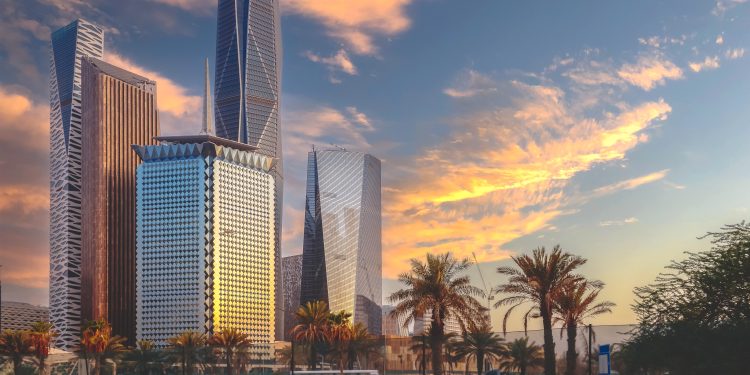Amid the towering skylines of Riyadh, Jeddah, and Dammam that epitomize Saudi Arabia’s economic prowess, a transformative story of decentralized growth is unfolding. This narrative, diverging from the historical concentration of progress in urban areas, is now shining a spotlight on the nation’s smaller towns and regional municipalities, drawing keen interest from investors, entrepreneurs, and government policy shapers.
Such a pivot indicates a significant paradigm shift from the long-held view that cities are the sole engines of growth, heralding a new chapter of exploration and economic diversification. The impetus behind this movement is the Saudi Vision 2030, a strategic framework aimed at building a resilient and inclusive economy by empowering previously overlooked locales.
Eminent economist Talat Hafiz, in a conversation with Arab News, emphasized that developing these smaller towns is crucial for stemming the internal migration of people searching for employment and a better standard of living in the larger cities. “It also supports the government efforts in reaching comprehensive sustainable economic development,
” he stated.
Hafiz highlighted that the growth sectors within these towns vary, as each possesses distinct economic traits and competitive edges. For some, tourism is a natural forte, while others excel in industrial activities. The decentralization of planning capabilities, as encouraged by Saudi Vision 2030, has enabled municipalities to collaborate with the private sector to elevate their status to that of urban cities, thereby enhancing infrastructure and public services.
“Boosting the capability of small towns is coupled with the development of universities and medical and educational facilities, which in turn has attracted investment, created job opportunities and limited internal immigration,
” added Hafiz.
Economist Nasser Al-Qaraawi pointed out that Saudi Vision 2030 also aims to reduce the overconcentration of populations in major cities, which has led to overcrowding and exacerbated urban planning challenges. He mentioned the 2006 stock market crisis as a historical factor contributing to this issue.
Al-Qaraawi noted that the 2030 plan has provided opportunities for less developed regions to thrive, although the success of these regions can be uneven due to bureaucratic barriers. He recommended a restructuring of municipalities to better align with the nation’s objectives and the citizens’ expectations.
Diverse investment opportunities in EP municipality
The Eastern Province’s governance body has revealed 362 diverse investment prospects across various cities and governorates. Encompassing over 20,000 assets and 116 million square meters, these opportunities span sectors such as infrastructure, transportation, and tourism, with incentives like contract extensions and exemption periods offered to investors.
Jazan as key investment hub, coffee capital
Jazan’s strategic port and refinery have spurred a surge in investment, bolstered by rapid infrastructure developments. The economic zone is targeting SR11 billion in foreign investments by 2040, capitalizing on its rich mining reserves and aiming to become a central player in the mining industry. The region also fosters a burgeoning coffee industry, supported by the Sustainable Rural Agricultural Development Program, which has provided over SR155 million to over 3,000 farmers.
Northern Borders region attracts more investors
The Northern Borders region is witnessing a boom in factory growth and investment, driven by a strategic regional development office. With plans for a new logistics zone in Arar, investors will be provided with land plots to encourage business development.
Asir region to exploit huge tourism potential
With a SR50 billion tourism strategy, Asir is poised to attract over 10 million visitors by 2030. The strategy focuses on cultural and natural attractions to establish Asir as a premier destination, with projects enhancing tourist sites on its mountains and the development of the new Abha International Airport.
Taif attracts investments of over SR11 billion
At the Taif Investment Forum, investment agreements worth over SR11 billion were signed, indicative of the city’s potential across various sectors such as tourism, agriculture, industry, and healthcare.
Al-Jouf provides 700 investment opportunities in 2023
Al-Jouf’s municipality, home to the Sakaka solar power plant, introduced more than 700 municipal investment opportunities through the ‘Furas’ portal in 2023. The region’s mayor highlighted the diversity of these opportunities, ranging from commercial to recreational, tourist, and service sectors.
Yanbu emerges as entertainment hub
Yanbu is set to become a new entertainment destination with a SR1.1 billion contract awarded for its development. The project is part of Saudi Entertainment Ventures’ plan to invest over SR50 billion in 21 entertainment destinations across the Kingdom.
Buraidah Municipality unveils 28 investments opportunities
The municipality of Buraidah in the Qassim region has announced 28 investment opportunities, showcasing the region’s rich natural and agricultural resources and potential for growth in multiple sectors.
Through such initiatives, Saudi Arabia is strategically leveraging regional potential to diminish its reliance on oil revenues, stimulate job creation, and promote widespread economic wellbeing, in line with the aspirations of Saudi Vision 2030.


